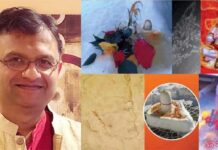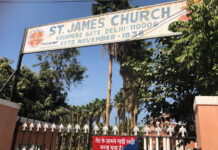By Ashok Bhargava
VANCOUVER: Festival of Holi – a carnival of colours – holds a very special place in my heart and I have cherished childhood memories of this fetsival.
Growing up in Punjab, I used to anxiously wait for Holi day to arrive so that I could have fun with my siblings and friends. Our Holi kee toli (Holi team) used to gather at a designated street corner by around 9 or 10 o’clock. Those scenes of street corners during my school days are permanently etched in my mind.
To play Holi involves teamwork and our team slogan used to be masto kee toli khaley ge Holi. This roughly translates into “A team of vagrants will play Holi”. To play Holi as a team, each member would take responsibility for different tasks such as mixing colours in water in a container, filling up balloons using pichkari (water pistol or gun) with colored water, tying knots for the filled balloons, keeping them in a safe container and counting them.
It was a Holi ritual to wear old clothes and apply mustard or coconut oil to our faces, necks and hair so that it is easier to wash colors off after. We begin Holi by putting some gulal (dry powder colours) on the elders and parents’ cheeks. After that, we were set for the best part – balloon attack. We used to throw balloons from the terrace on to the people passing by, neighbours, visiting friends, and when no prey was around, on one another. In addition to our balloon attack, we used pichkaris or a bucket filled with coloured water to drench other people completely in colors.
The most enjoyable act was surrounding strangers or friends and coating their faces, necks, hands, and hair with very fast colours, which will not wash off the skin even after several baths. Sometimes we had to chase people before they reluctantly surrender to be soaked in wet colours.

I remember that the migrant workers from Bihar and U.P. had Holi with a religious fervor and humility. Their tradition was to play only with gulal. No water colours. No fast colors. They will sing songs of Krishna playing Holi with his consort Radha, gopis (cowgirls) and dance to the beats of dholki (drums). I admired their passionate enthusiasm for Lord Krishna and relating to Him in their own personal ways.
After playing with colours, Holi kee toli is disbursed and we return home to take baths and change clothes. We usually had a feast of freshly fried pakoras (fritters), sweets and a drink of homemade spicy kanji. Kanji is a fermented drink made with water, carrots, beetroots and mustard seeds for Holi.
This is how our carnival of colours used to end. Those were the times of fun and frolic for us. How did you play your Holi?
This year Holi falls on March 17, same day our Irish brothers and sisters celebrate St. Patrick’s Day. Lets add our colours to our multi-cultural homeland Canada.
May this Holi festival enrich your life with vibrant colours!
(Ashok Bhargava is the president of Writers International Network Canada)
READ NEXT: WIN Canada president Ashok Bhargava recalls winters of Punjab in his childhood






